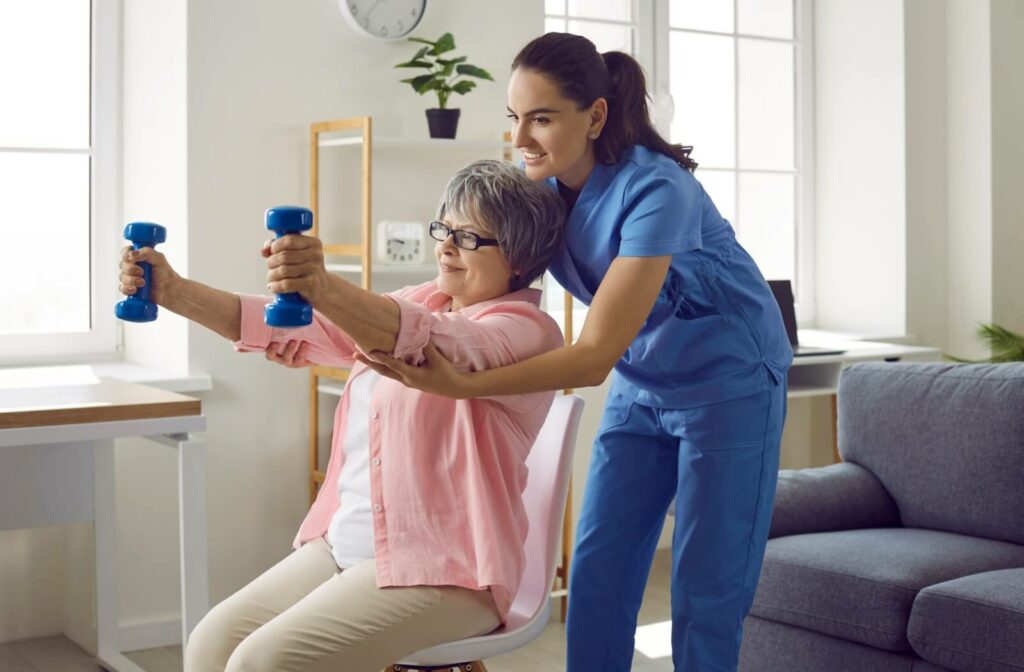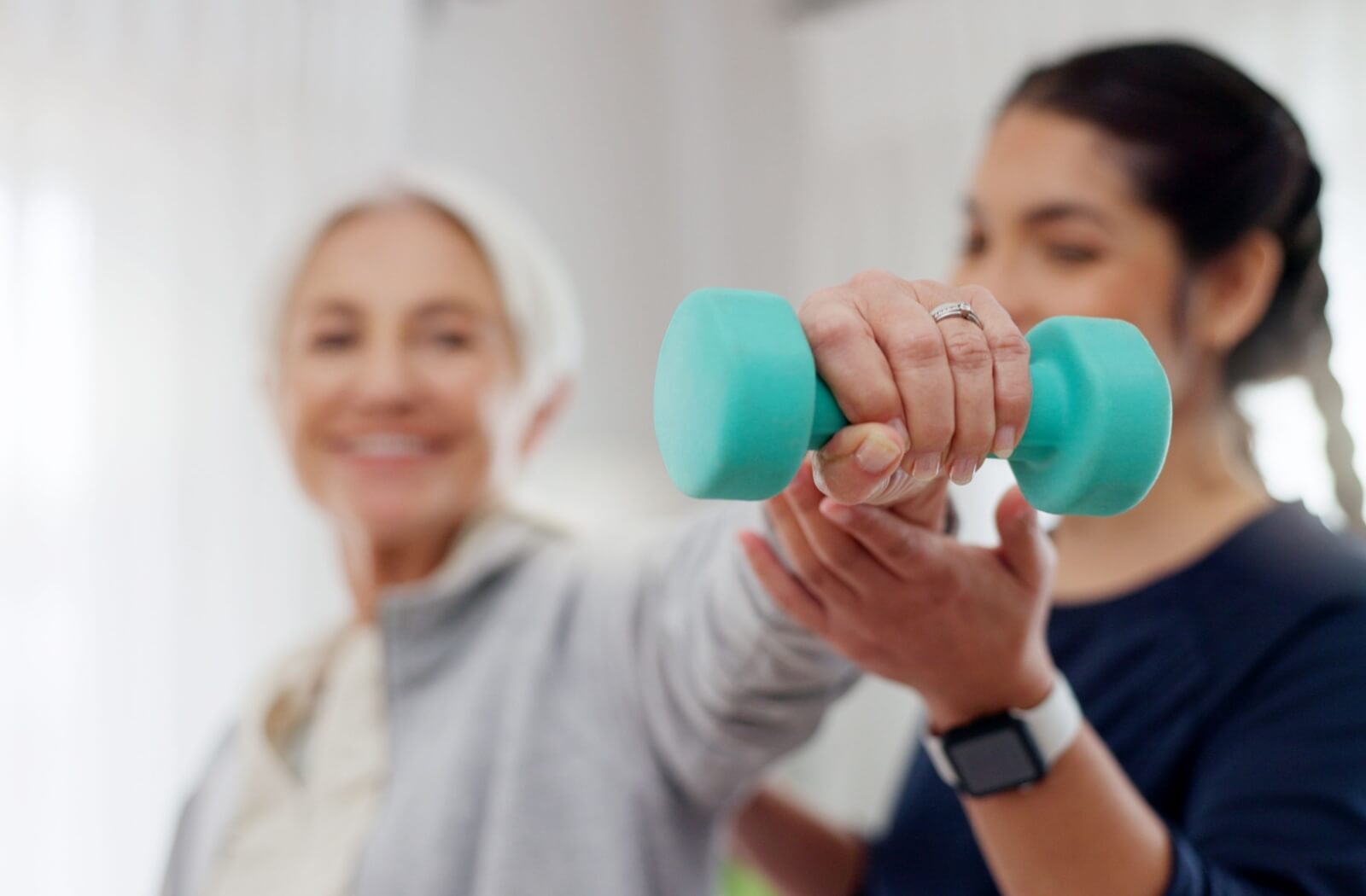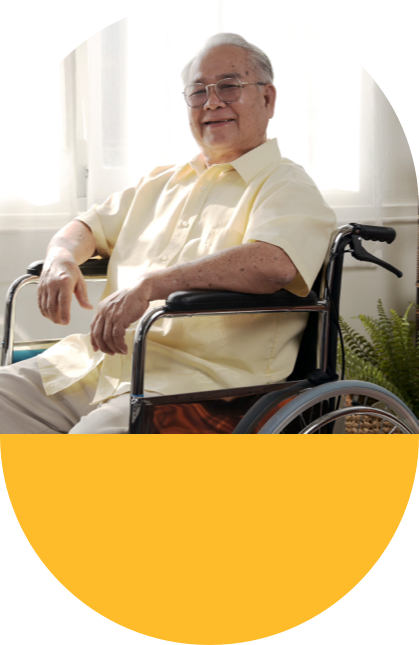Living with arthritis can make it tough to stay as active as you’d like. However, that doesn’t mean movement is off the table. In fact, the right kind of activity can do wonders for your joints, muscles, and overall energy.
Simple, low-impact workouts can be a great way to maintain mobility and ease daily stiffness. Between stretching, chair yoga, resistance bands, and even simply walking, older adults living with arthritis can still work towards a healthier life.
Why Exercise Is Important for Seniors with Arthritis
Arthritis can limit your ability to move freely, and it often makes day-to-day activities harder than they used to be. But regular movement—especially the low-impact kind—can support your body and mind in powerful ways.
The right exercises can:
- Ease joint pain and stiffness by boosting blood flow and keeping your joints moving
- Build muscle strength around weak or swollen joints to reduce strain
- Improve flexibility through safe stretching and range-of-motion movements
- Boost heart health and support a healthier weight
- Enhance mental health by releasing feel-good endorphins and reducing anxiety
These benefits add up over time. However, consistency is more important than intensity. Always listen to your body, and never try to push through discomfort. Safety should always be a top priority when you’re beginning a new exercise routine.
4 Gentle Workouts for Seniors with Arthritis
When it comes to mobility exercises, not all workouts are created equal. These low-impact exercises are perfect for older adults, as they offer a safe, effective way to stay active.
Stretching
Stretching is a simple approach to exercise. It offers all kinds of benefits to older adults as well. With regular stretching, older adults living with arthritis can improve their flexibility and retain a wider range of motion, which makes everyday activities much easier.
Meanwhile, stretching helps loosen the muscles before other exercises. This makes staying active much easier, as you’re naturally working in a warm-up and cool-down period. With regular stretches, older adults can steadily work towards a healthier life.
Chair Yoga
Chair yoga is a flexible, safe way to stretch and build muscle strength while staying grounded. By staying seated, you can work on balance, posture, and breathing without putting your body at risk. It also improves flexibility and brings a calm focus to your day, which helps with stress relief and joint support.
Walking
Walking is one of the simplest and most accessible low-impact exercises for managing arthritis. It’s great for improving cardiovascular health, reducing joint swelling, and helping with weight management. It’s also flexible and free, so older adults can take it at their own pace.
To keep your joints comfortable, choose supportive footwear and smooth, even paths. You can even bring a friend or join a walking group for a social boost along the way.
Strength Training with Resistance Bands
Light resistance bands can help older adults build strength without overloading the joints. These stretchy bands let you target specific areas—like arms, legs, and core—with slow, controlled motions. It’s a safe way to improve mobility and make everyday activities easier.

Tips for Safe & Enjoyable Workouts
Staying safe is key when adding exercise to your routine, especially when managing arthritis. Here are a few easy ways to keep things comfortable and productive:
- Warm up for 5–10 minutes to gently wake up your muscles.
- Go at your own pace and don’t push through pain.
- Listen to your body—discomfort is okay, sharp pain isn’t.
- Stay consistent by spreading your workouts throughout the week.
- Seek professional advice if you’re just getting started or want to personalize your routine.
These tips help you stay active without putting extra strain on your joints.
Staying Motivated to Keep Moving
Sticking with a workout routine takes commitment. But the right mindset and a few simple tricks can keep you going strong:
- Set small goals like 10 minutes of walking or a few seated stretches.
- Celebrate progress by tracking milestones and giving yourself a pat on the back.
- Track your efforts in a notebook or app so you can look back and feel proud.
- Find support by joining social groups, fitness classes, or even recruiting a workout buddy.
Movement becomes easier and more fun when you build a routine that works for you.
An Active Life Is Still Within Reach
Arthritis doesn’t have to hold you back from living an active, healthy life. By incorporating low-impact exercises like water aerobics, chair yoga, walking, and resistance bands into your routine, you can improve your mobility, strength, and overall well-being.
If you’re looking for a supported, active life, our team at Juniper is here to help. In our community, we love supporting residents every day, no matter their fitness goals. We offer all kinds of programs and amenities to make exercising easier than ever, so what are you waiting for? Schedule a visit today, and come see your future home.







